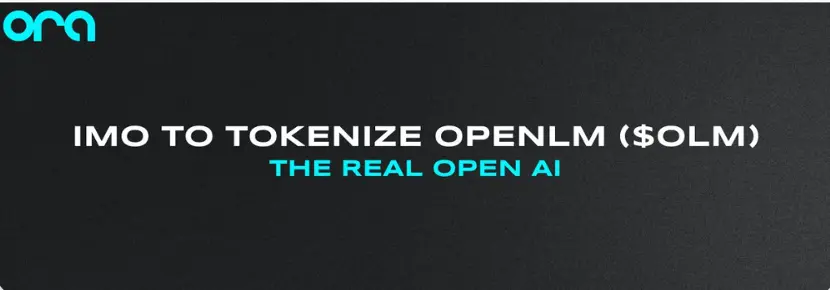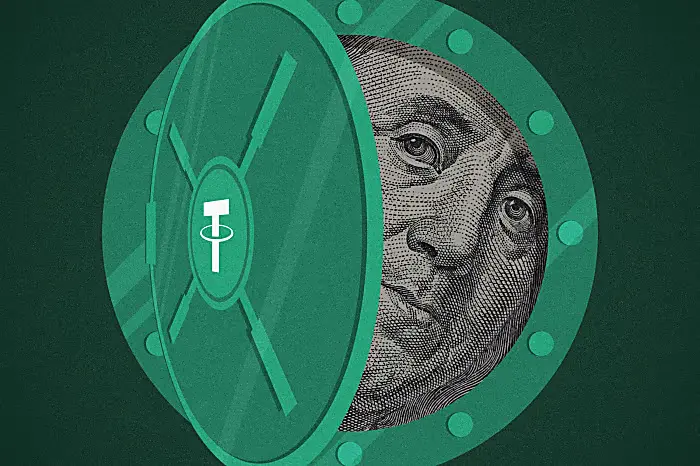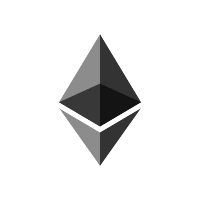Foresight Ventures: BTC halving is approaching, frequent spikes indicate risks
Written by: Mike
A. Market View
1. Macroeconomic Liquidity
Monetary liquidity is improving. The U.S. core CPI has once again exceeded expectations, and the probability of the Federal Reserve cutting interest rates in June has dropped to below 50%. Swap contracts indicate that the Fed will only cut rates by 50 basis points in 2024. Inflation is making a comeback, and U.S. Treasury yields have started to rebound. U.S. stocks are adjusting weekly, and the crypto market is following the overall weakness of the stock market.
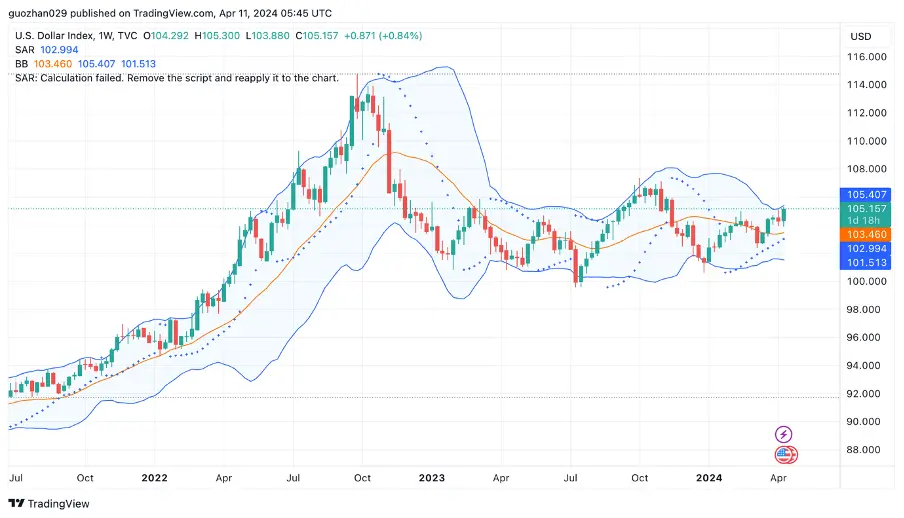
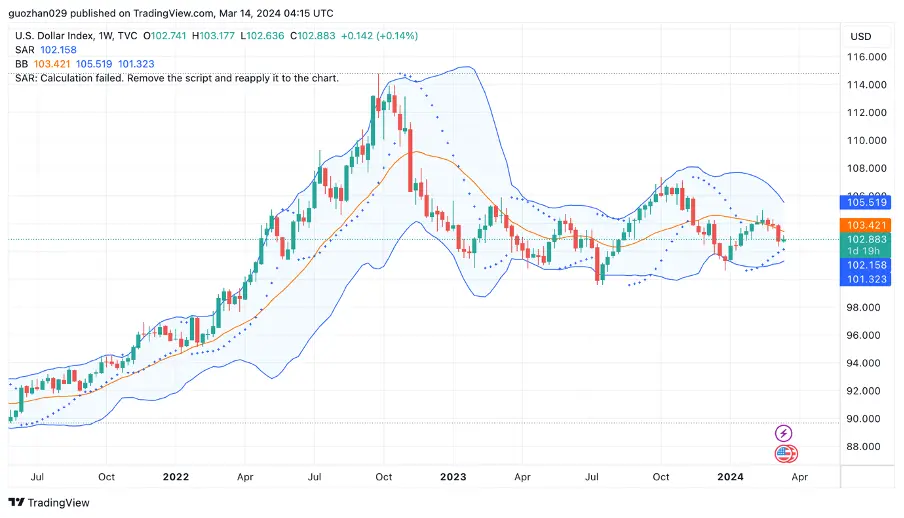
2. Overall Market Trends
Top 100 by Market Cap Gain:
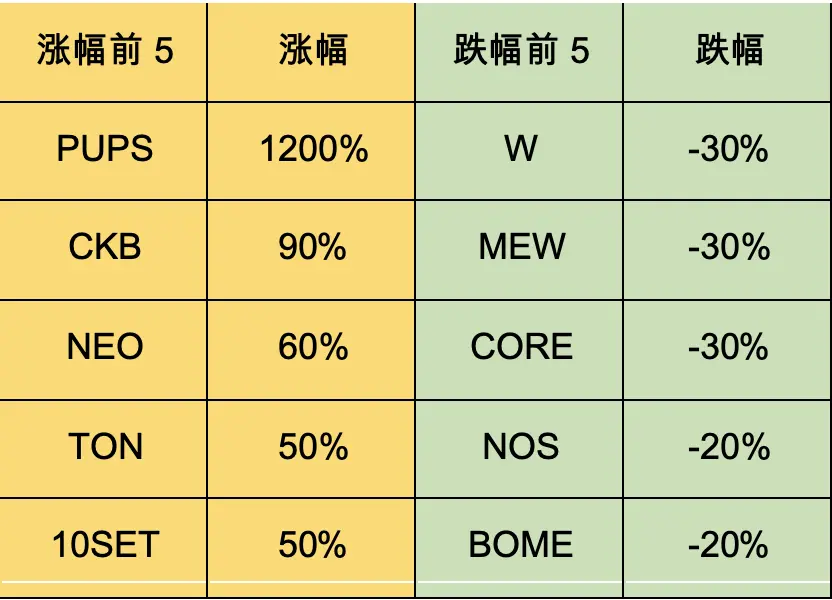
This week, BTC fluctuated at high levels as the halving approaches. Market hotspots revolve around the BTC ecosystem and real yield DeFi protocols. When the market surges, imaginative narratives like AI and Meme sectors are favored. When the market adjusts, sectors with safe yields like re-staking and stablecoins are preferred.
CKB: A well-established domestic public chain, recently released the RGB++ BTC L2 protocol, with the first test coin SEAL surging hundreds of times. The Runestone and PUPS in the BTC rune ecosystem also saw significant gains. Runes are an upgraded version of inscriptions that can effectively reduce BTC network congestion, with plans to launch by the end of April.
ENA: The fastest-growing stablecoin protocol recently, offering up to 30% arbitrage rates. Currently empowering ENA tokens, staking ENA can accelerate mining rewards. ENA operates similarly to mining coins to incentivize large-scale usage.
TON: A public chain entering the top 10 by market cap, with relatively concentrated chips. The ecosystem token Notcoin will issue tokens soon, allowing users to mine for free on their phones, with 30 million users and 5 million daily active users.
3. BTC Market Trends
1) On-chain Data
BTC's pullback is smaller than in previous cycles, with risks gradually accumulating. BTC miner income is in a downward trend; although current transaction volumes remain high, they are significantly lower than last year. Since the historical peak was broken, the market has only experienced two adjustments of over 10%, whereas historically, most pullbacks are much larger, with over 25% being common.
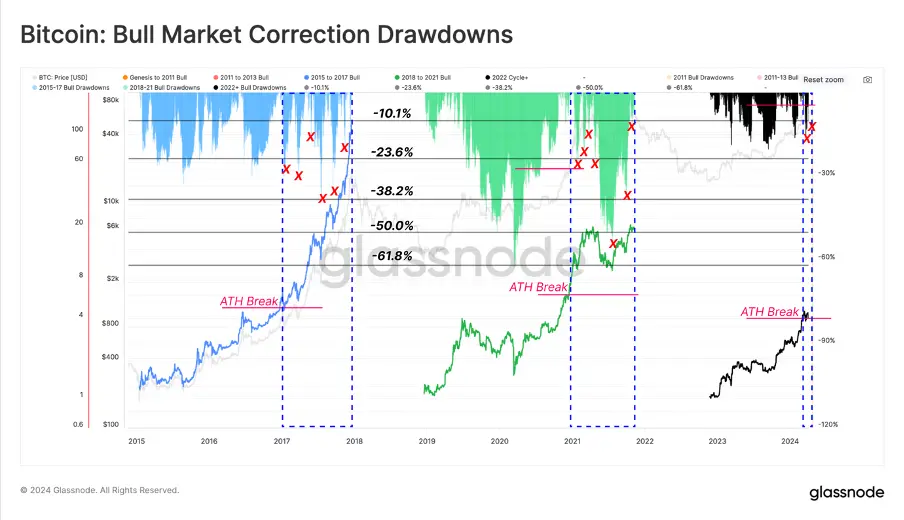
The market cap of stablecoins has increased by 1%. The U.S. has accused Russia of using the stablecoin USDT for activities.
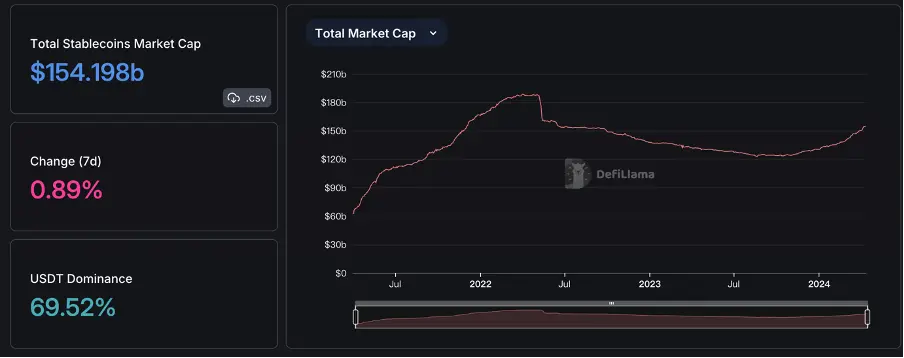
The long-term trend indicator MVRV-ZScore, based on the total market cost, reflects the overall profitability of the market. When the indicator is greater than 6, it indicates a top range; when less than 2, it indicates a bottom range. MVRV has dropped below the critical level of 1, indicating that holders are generally in a loss state. The current indicator is 2.8, entering a middle stage.
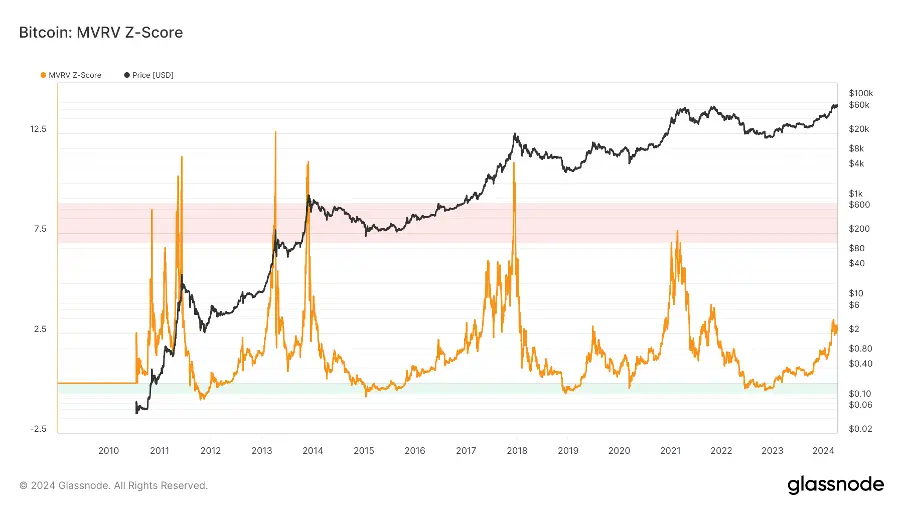
Institutional funds have seen a net inflow for two consecutive weeks, but the inflow rate has significantly slowed.
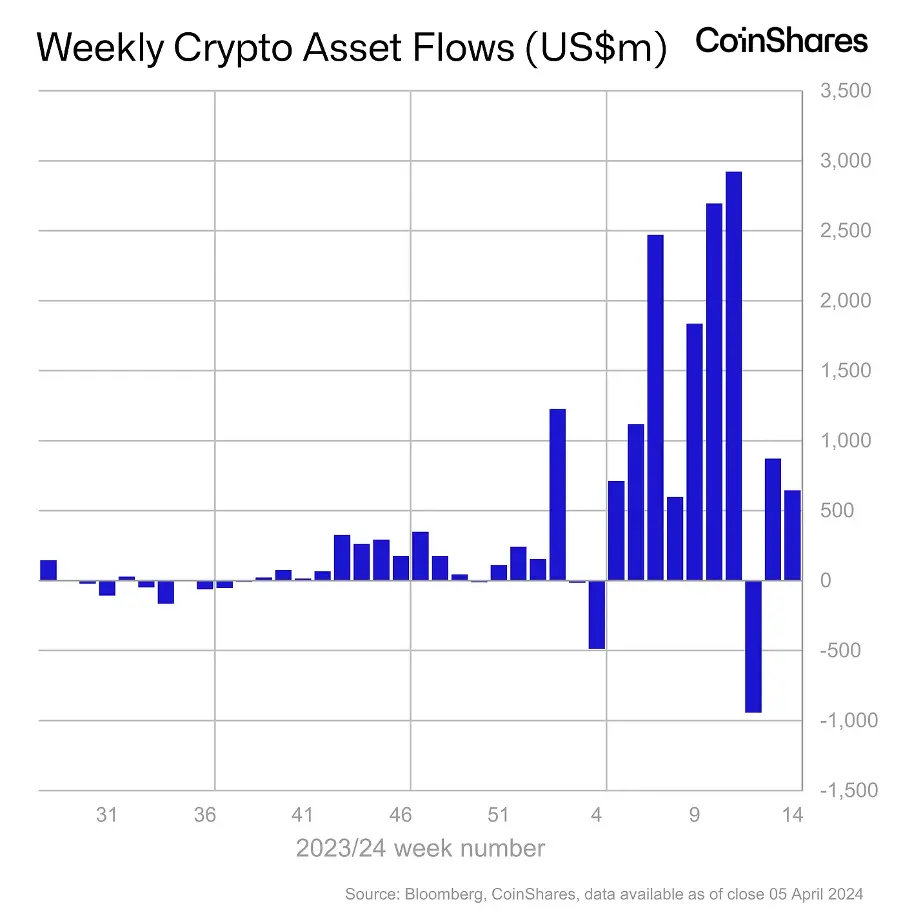
2) Futures Market
Futures funding rates: This week, rates have returned to normal. Rates are at 0.05-0.1%, with more long leverage, indicating a short-term market top; rates at -0.1-0% indicate more short leverage, suggesting a short-term market bottom.
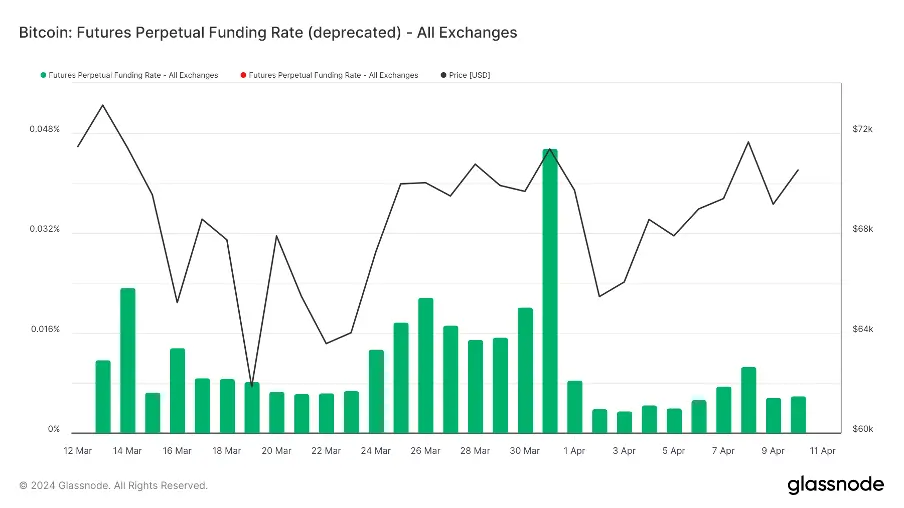
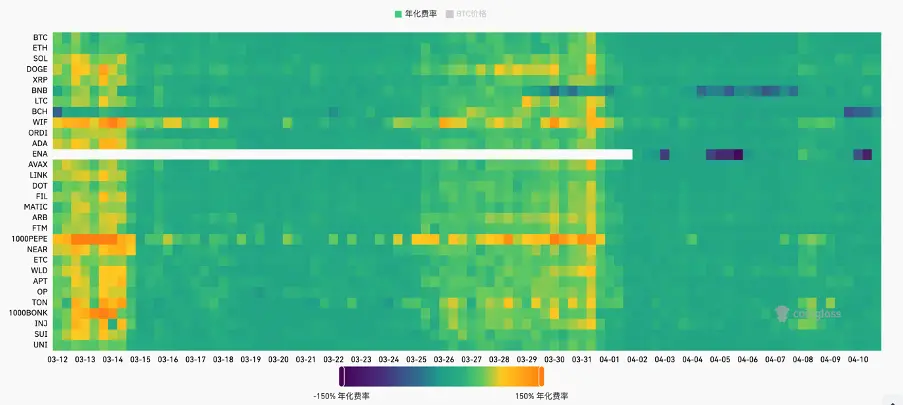
Futures open interest: This week, BTC open interest remained basically flat.
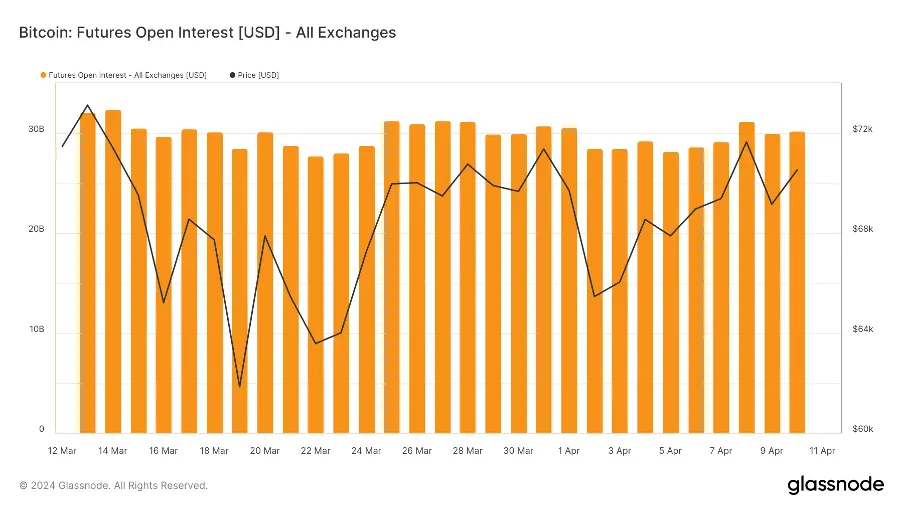
Futures long-short ratio: 1.1, indicating normal market sentiment. Retail sentiment often serves as a contrarian indicator; below 0.7 indicates panic, while above 2.0 indicates greed. The long-short ratio data is highly volatile, reducing its reference significance.

3) Spot Market
BTC fluctuated at high levels, approximately 10 days away from the halving. BTC set a historical high before the halving, the first time in 15 years. Last year, ETH earned fees 100 times higher than SOL, but now it only earns 4 times the fees. Meanwhile, ETH's market cap has dropped from 25 times that of SOL to 5 times. From a valuation perspective, as fee income capabilities converge, SOL's market cap has more room to catch up with ETH. As SOL also becomes increasingly congested, many funds are flowing into emerging BASE and TON chains.

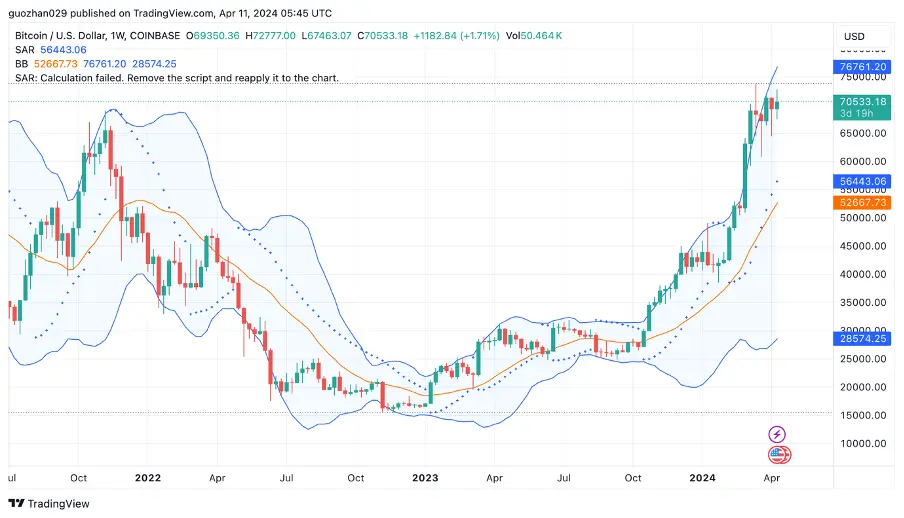
B. Market Data
1. Total Locked Value of Public Chains
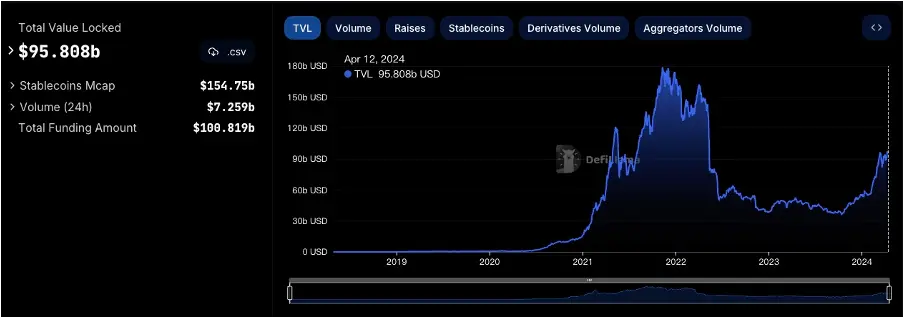
2. TVL Proportions of Various Public Chains

This week, the total TVL is at $95.8 billion, a decrease of $2.5 billion, with a decline rate of 2.5%. This week, mainstream public chains primarily saw increases in TVL, with the ETH chain up 7%, TRON and BSC chains each up 1%, ARB chain up 5%, and BTC chain up 7%. The SOLANA chain, which performed best in recent months, dropped by 10%. Notably, the recently hot BLAST and BASE chains surged by 28% and 23%, respectively, ranking sixth and seventh with total TVLs of $1.7 billion and $1.5 billion. The leading project on the BLAST chain, Thruster, surged 521% in the past month, while Hyperlock Finance surged 12,565%. The OP chain fell by 2% this week and has dropped out of the top ten in public chain TVL rankings.
3. Locked Value of Various Chain Protocols
1) ETH Locked Value
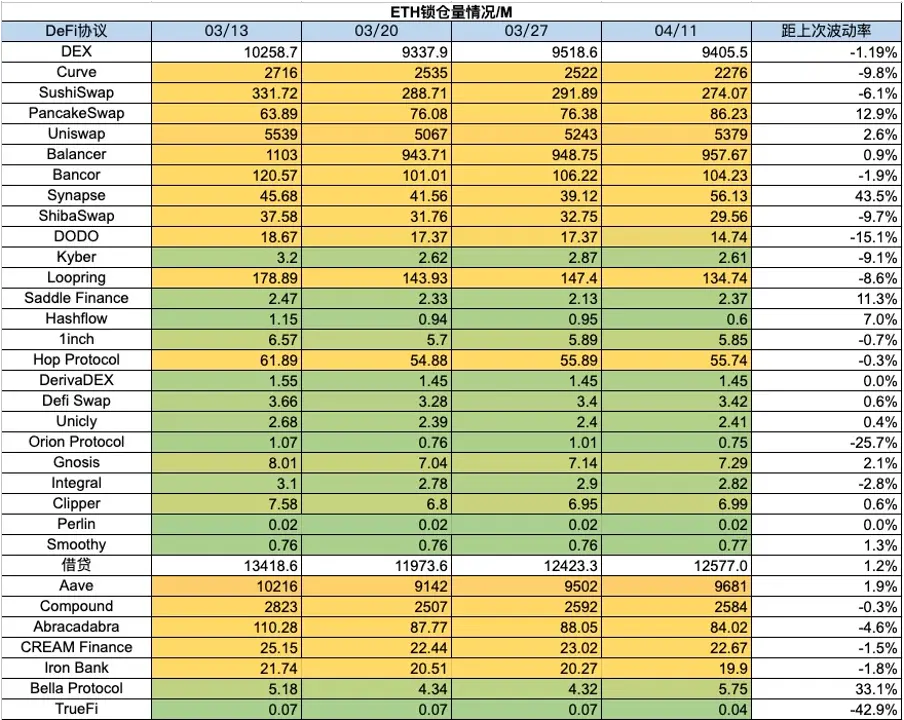

2) BSC Locked Value
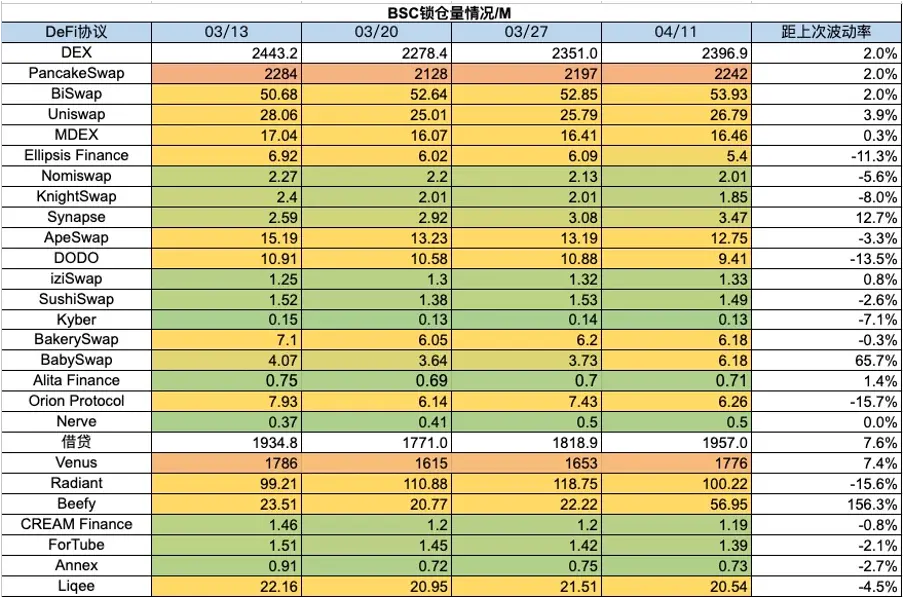
3) Polygon Locked Value
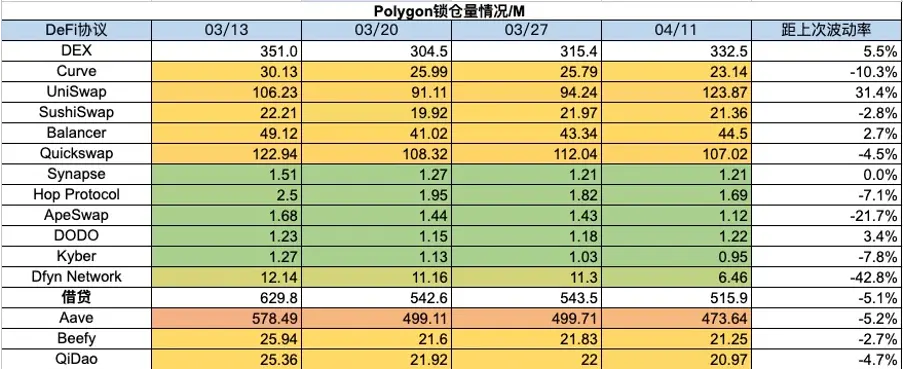
4) Arbitrum Locked Value
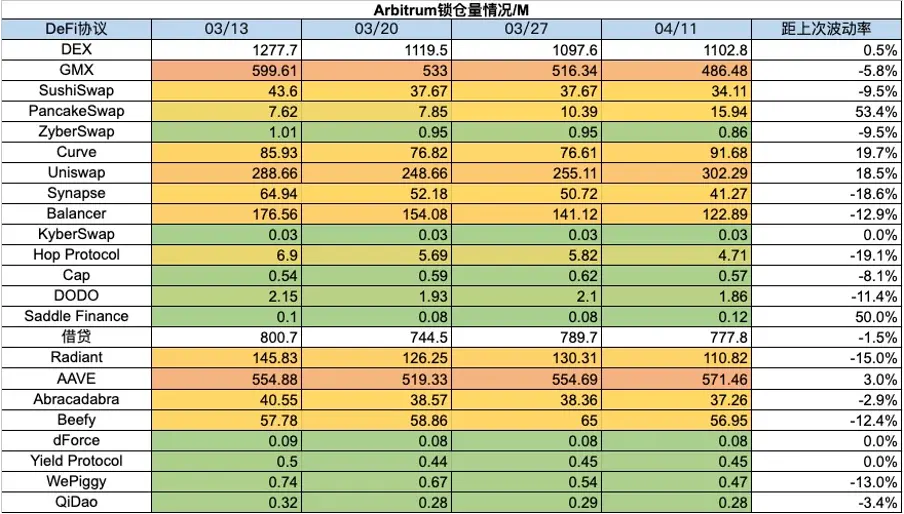
5) Optimism Locked Value
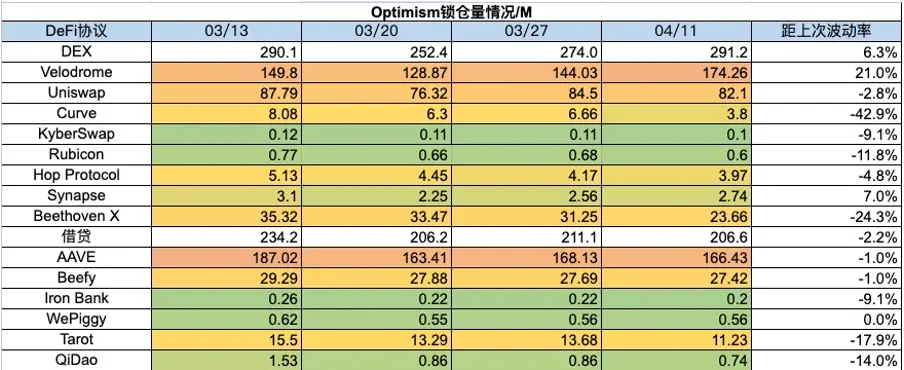
6) Base Locked Value
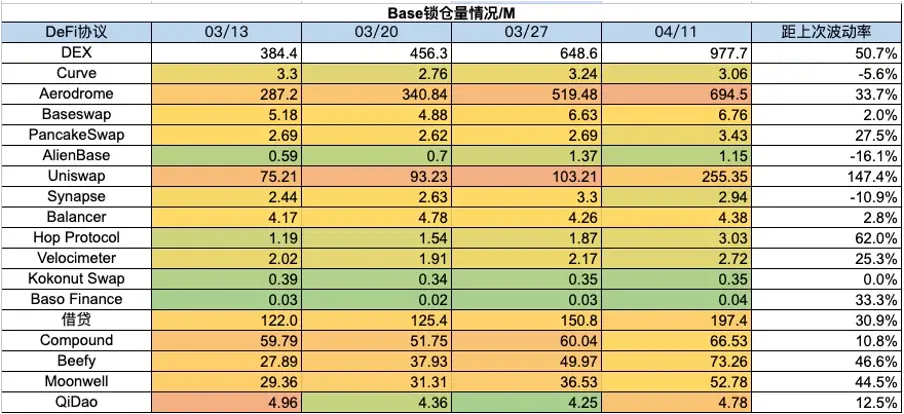
7) Solana Locked Value

4. Changes in NFT Market Data
1) NFT-500 Index
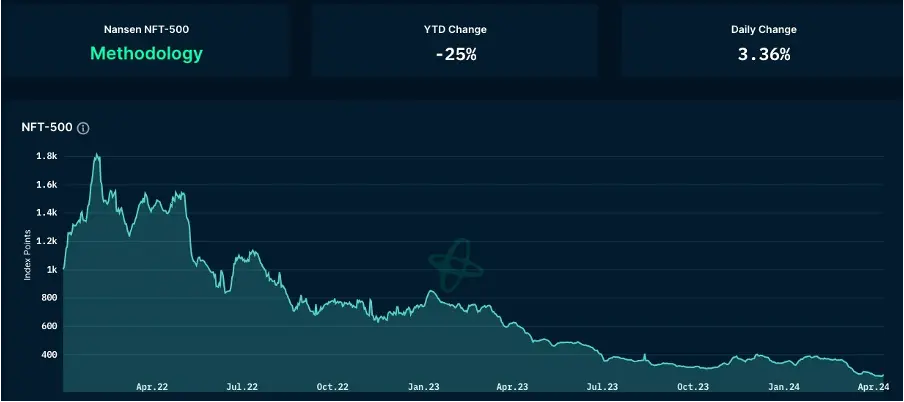
2) NFT Market Situation
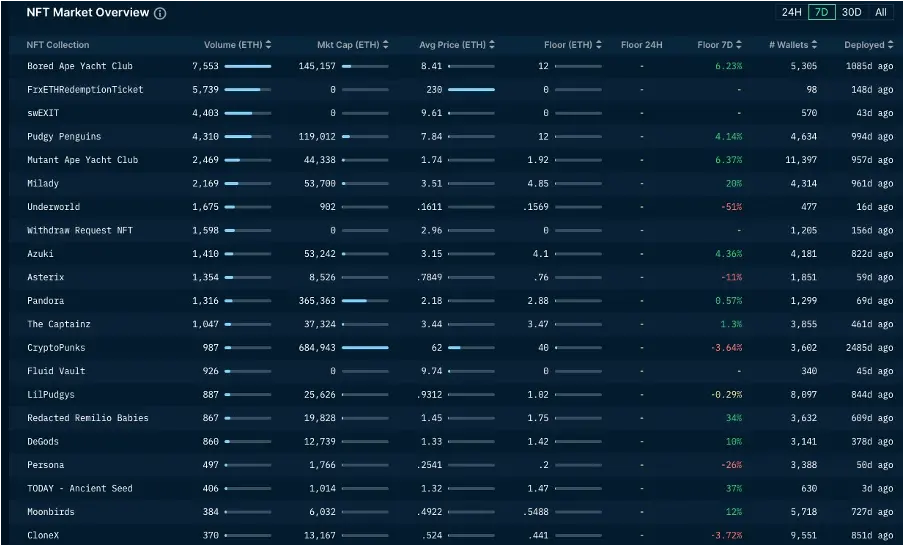
3) NFT Trading Market Share
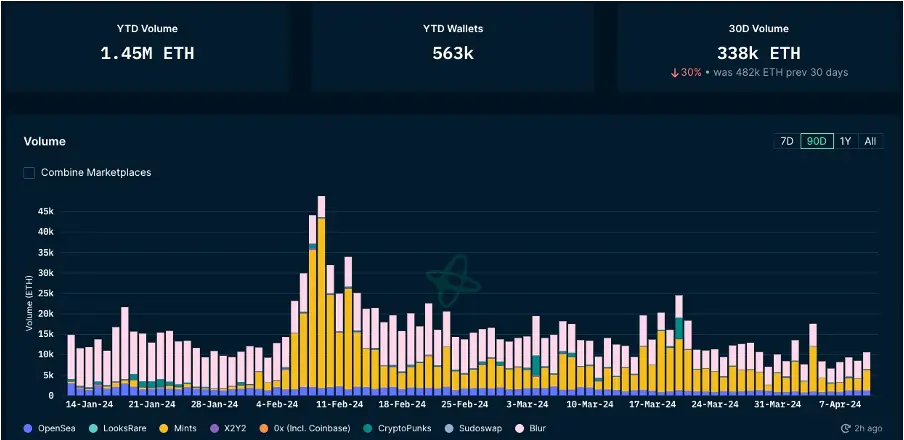
4) NFT Buyer Analysis
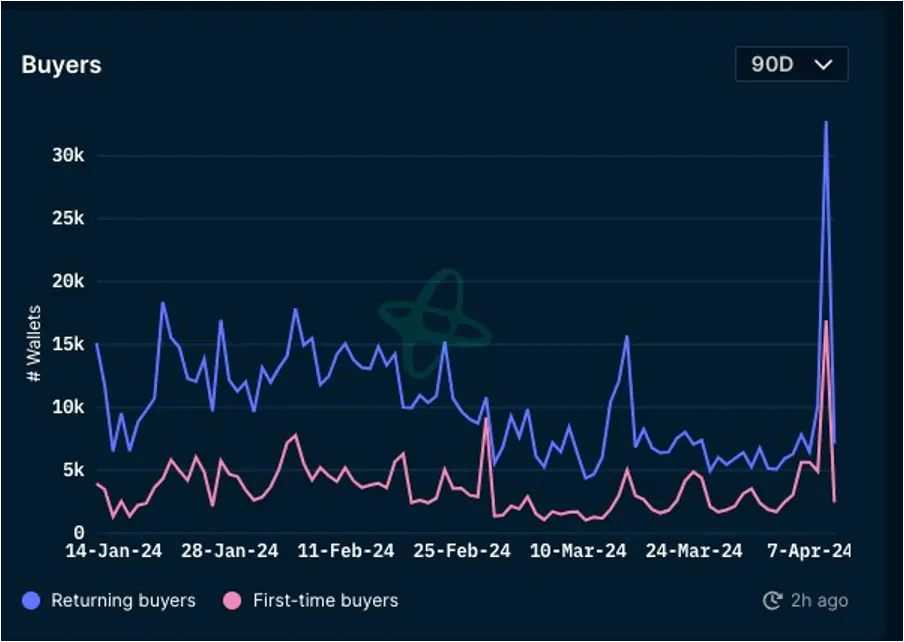
This week, the floor prices of blue-chip NFT projects have risen, while the overall market is still searching for support, with an increase of over 3% today. BAYC and MAYC both rose by 6%, Pudgy Penguins rose by 4%, Milady rose by 20%, Azuki rose by 4%, DeGods rose by 10%, and CryptoPunks fell by 4%. The total trading volume in the NFT market has slightly rebounded, with BAYC regaining the top position with a seven-day trading volume of 7,553 ETH. The number of first-time and repeat buyers has not changed significantly. The sluggish sentiment in the NFT market continues, and whether this bull market cycle can revitalize the NFT market remains a question.
5. Latest Financing Situation of Projects
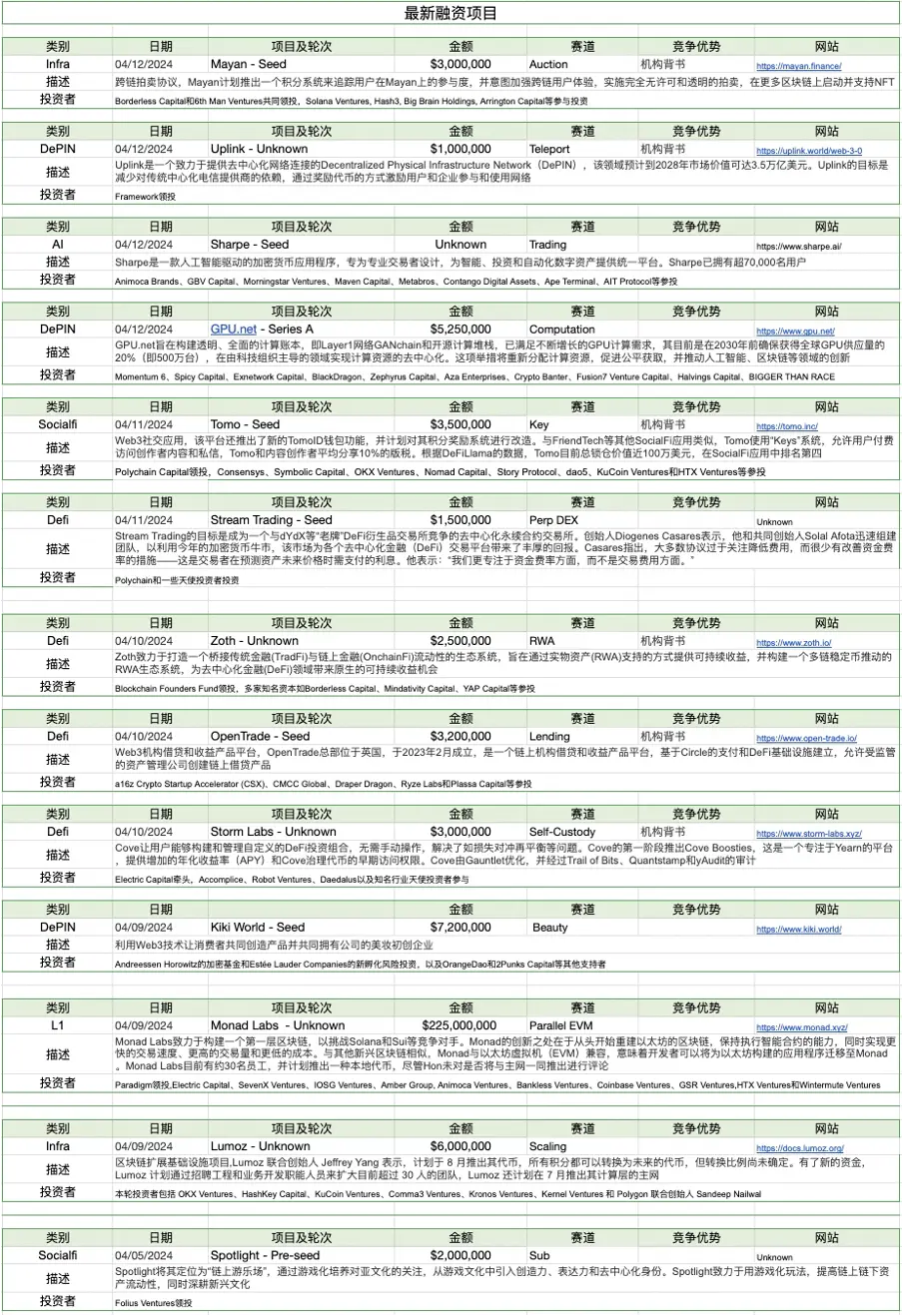
6. Post-Investment Dynamics
1) bitSmiley --- BTC Ecosystem
No subscription is required for the joint public testing event "The Trumeme Show" between bitSmiley and bitCow, which started on April 8 at 19:00. Currently, high traffic has caused the Merlin testnet to overload. The bitSmiley project team is actively coordinating with Merlin officials to expand support and provide a better testing experience for participants.
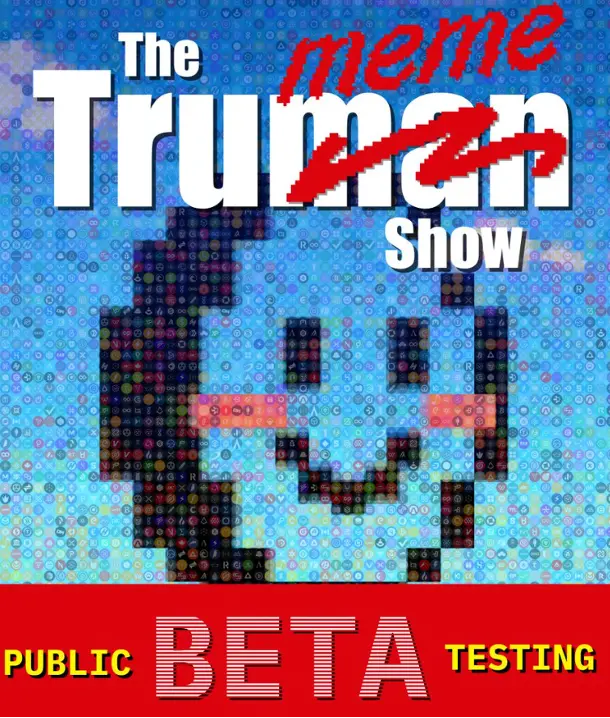
2) Polyhedra Network --- ZK
Polyhedra Network has reached a strategic cooperation with ether.fi. Through zkBridge technology and Active Verification Service (AVS) from EigenLayer, Polyhedra Network achieves a trust-minimized interoperability protocol between the Bitcoin network and other blockchain systems. Ether.fi will further provide $3 billion in crypto-economic security for this protocol. At the same time, ether.fi will use Polyhedra as its default decentralized validator network (DVN) on LayerZero to enhance the security and efficiency of the protocol. In the future, stakers of ZK tokens will have the opportunity to earn $500,000 in ETHFI token rewards.
Currently, Polyhedra's Bitcoin interoperability protocol has secured over $5.3 billion in crypto-economic security, supported by ether.fi, Renzo, and Swell's LRT. Additionally, its dual-staking mechanism allows future ZK token stakers in its AVS to also earn from its Bitcoin interoperability protocol.
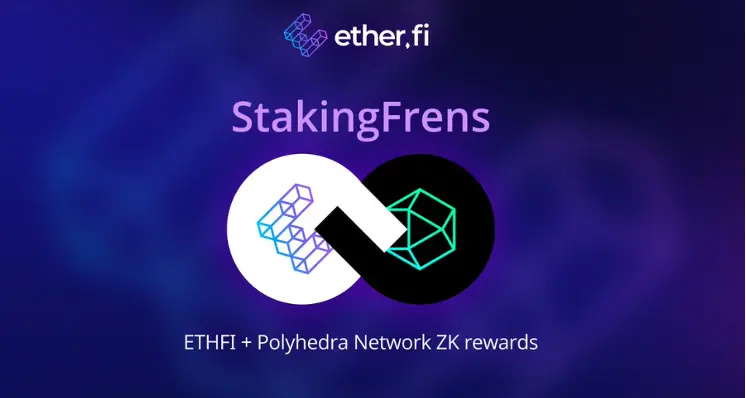
3) ORA --- Verifiable Oracle Protocol
The total supply of OpenLM's IMO token OLM is 1 billion, with 50% allocated for public sale, 30% for liquidity, 10% for OpenLM contributors, and 10% for the ORA team. The fully diluted valuation of OLM is 300 ETH, and the IMO will raise 150 ETH (500 million OLM), with the IMO price of OLM set at 3e-7 ETH (approximately 0.001 USDT). OLM features both revenue sharing and burning, with a portion of income from OAO or other sources allocated to a revenue-sharing pool composed of OLM tokens, allowing token holders to apply for income every 90 days after a snapshot. A portion of income from OAO or other sources will also be allocated to the OLM token burn pool, allowing token holders to destroy their tokens as part of a buyback mechanism, which will support the floor price of OLM.
